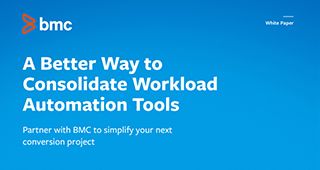Everywhere you look, technology drives business, and every organization that embraces a digital culture is challenged to adapt or disrupt its technology landscape to continuously drive innovation.
Established companies in traditional sectors such as financial services, oil and gas, automotive, and pharmaceuticals face different challenges than new market players that were born with a digital strategy. However, if they can quickly integrate new solutions into their existing platforms and deploy the right technology mix, their traditional assets—repositories of historical data on customer behavior, transactions, and so on—can become an advantage versus a barrier to innovation. When used strategically, this data can help maintain and build loyal customer relationships.
Common business goals
While every industry is unique, they often share the same business goals and face common challenges. In fact, businesses of all sizes look to companies like Amazon as a model for how to build excellent customer experiences.
When embracing the roadmap to customer centricity, agility, and actionable insights, companies—and established companies, in particular—will likely have to make some changes to their existing infrastructure to get on the right path, especially when they discover technology gaps their current tools can’t fill. One common gap is application and data workflow orchestration. However, many companies fear that it’s too risky to replace their existing automation tools (or homegrown solutions) in favor of an enterprise grade platform.
Fortunately, Control-M (self-hosted and SaaS) can minimize this risk.
The case for change
Suppose your company wants to create data-driven targeted advertising. The Internet of Behavior (IoB), which extends from the Internet of Things (IoT) and is the interconnection of devices that generate a vast variety of new data, is undoubtedly a perfect source of information. Established businesses can also mine their historical customer data to find powerful insights. However, the challenges are how to deploy the latest technology to collect and process customer data so it’s available throughout the organization in real-time and how to bridge the gap with existing technology.
If your current automation technology doesn’t allow you to rapidly and reliably integrate new technology solutions into your workflows, you’re already falling behind. You’ll be left with snippets of past and present customer behavior data that are stuck in siloed tools. If you try to create and maintain manual integrations, you’ll inevitably have blind spots that could lead to inaccurate or incomplete data. Manual integrations are also inefficient to manage. It’s time to make the right choice.
With Control-M, you can integrate disparate technologies; orchestrate the entire process of ingesting, storing, processing, and analyzing customer data from multiple sources (on-premises to the cloud); and deliver fast results at scale.
Minimize conversion risk with Control-M
Recognized as a leading application workflow orchestration platform, Control-M provides the most modern toolset for orchestrating complex application and data workflows across multiple cloud and on-premises environments.
Control-M offers comprehensive, supported, built-in conversion tools, which are constantly enhanced based on customer conversion experiences. You can leverage the conversion tools to automatically convert data from out-of-the-box schedulers, workload automation products, and application-embedded schedulers. Furthermore, you can easily create your own conversion rules and automatically convert from any product not supported natively.
Far too often, the conversion of one or more tools requires structural changes and becomes a complex change management project, especially when business-critical services are involved. Control-M conversion tools were designed to mitigate this risk by guiding you through a staged approach. At each conversion stage, you’ll get a clearer, simpler view of the action required, with reports that help you predict the extent and duration of the conversion. This will help you find the optimal time to complete the migration and minimize downtime.
Finally, if you are concerned about the skills and resources needed to complete a conversion, you’re not alone. Our BMC experts and partners have helped many customers successfully complete their migration projects. They can provide support throughout the entire migration, ensuring your goals are met at every stage.
Conclusion
To get maximum value from your organization’s customer data, and turn that data into powerful insights, you’ll likely need to fill gaps in your technology stack. With Control-M, you can eliminate these gaps and mitigate conversion risks—all while supporting your organization’s journey to agility, customer centricity, and actionable insights.
Next steps
Check out this white paper, A Better Way to Consolidate Workload Automation Tools.







